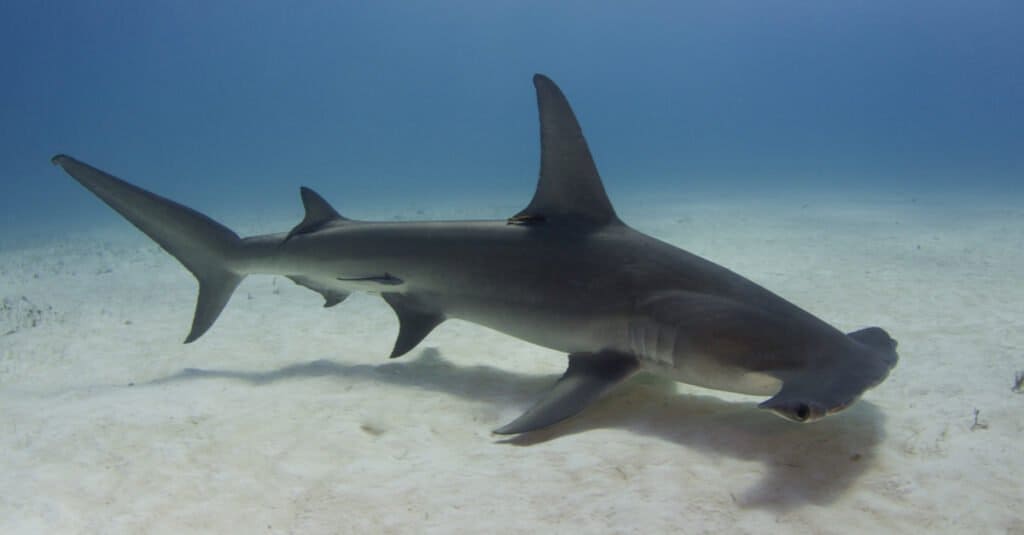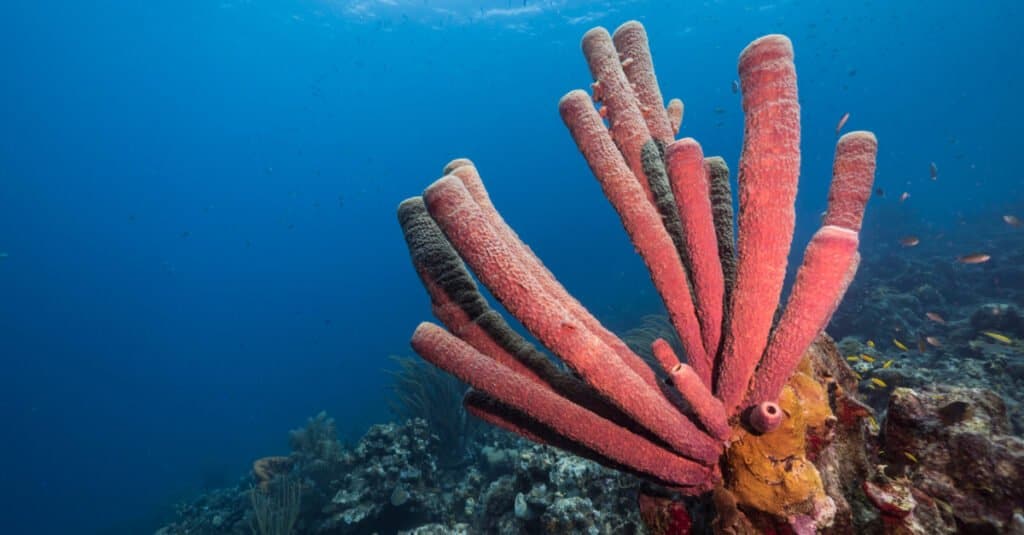Asexual reproduction is one type of reproduction where only a single parent is needed to produce offspring rather than two.
Asexual Reproduction Summary
Typically, reproduction requires two parents to produce offspring. Asexual reproduction, however, is a type of reproduction where offspring can be created by just one parent. Since there is only one set of DNA going into producing this offspring, the new individuals are actually completely identical to their parents, in both genetics and physical appearance. Technically, the offspring produced through asexual reproduction is a clone of its parent.
All types of organisms can undergo asexual reproduction. This includes multicellular organisms like komodo dragons and sharks, and unicellular organisms like certain types of bacteria. No matter the type of organism to undergo asexual reproduction, it will almost always pass down genes identical to its own. The only exception to this is if a mutation occurs, which can be rare.
Characteristics of Asexual Reproduction

Adapting to the lack of reproduction opportunities in captivity, some sharks have been found to reproduce asexually.
©Matt9122/Shutterstock.com
Several vital characteristics make asexual reproduction the biological process that it is. First, it is essential to remember that, in all cases of asexual reproduction, only a single parent will be involved. If two parents contribute genes to the offspring, it is sexual reproduction.
Because only one parent is involved, you won’t see specific aspects of reproduction, such as fertilization or gamete formation. A gamete is the reproductive cell of an animal or plant, such as an egg in females. Fertilization is when male and female gametes combine. Because there are no gametes to be formed and no different gametes capable of combining, fertilization cannot occur in asexual reproduction.
This also leads to the offspring being genetically identical to their parent. With gamete formation and fertilization, genes, and chromosomes are changed. However, because this doesn’t occur with asexual reproduction, the only changes that can occur are extremely rare mutations.
While it doesn’t occur in every case, especially with those dealing with multicellular organisms, it is common to see that organisms that reproduce asexually also tend to grow and multiply quickly. This is because there is less time spent finding a mate, undergoing a pregnancy, and raising young offspring.
Asexual Reproduction vs. Sexual Reproduction
Already, you’ve been able to learn a little bit about the differences between asexual reproduction and sexual reproduction. However, there are also other differences to help set these two modes of reproduction apart.
| Asexual Reproduction | Sexual Reproduction |
| Single parent | Two parents |
| Genetically identical parent and offspring | Unique offspring |
| No gamete formation | Gamete formation |
| No fertilization | Internal or external fertilization |
| No genetic variation | Genetic variation |
Types of Asexual Reproduction
There are several different types of asexual reproduction. Many of these are only seen in plants or unicellular organisms. However, some may also appear in multicellular organisms, including animals like sharks and reptiles.
Binary Fission
Binary fission is one of the most common types of asexual reproduction. The word “binary” means two things. The term “fission,” however, means to divide. As a result, binary fission involves a single parent dividing to create a parent and offspring.
One of the reasons that binary fission is one of the most common modes of asexual reproduction to be seen in nature is its simplicity. Unicellular organisms like amoebae and euglena often reproduce this way.
Understanding what exactly happens during binary fission involves knowing about cells. A single cell is made up of many different parts. You may have heard of the mitochondria. These tiny cell parts are called organelles. Every organelle is contained inside a barrier known as the cell wall. Inside the cell wall, the organelles float around in a substance known as cytoplasm.
The nucleus is the most important organelle, especially when discussing binary fission. The nucleus is where all genetic material is stored in every cell. During binary fission, the cell will split, dividing the parent into two daughter cells. Each daughter cell has half of the original nucleus and cytoplasm, meaning they are genetically and physically identical.
Binary fission can occur endlessly so that the original parent cell will reproduce until, eventually, there can be hundreds of thousands of offspring that are all genetically the same.
Budding
Budding is similar to binary fission in that it involves the offspring growing directly from the parent, turning a single organism into two. However, it’s different in that the parent remains.
Think about a tree branch. It begins as a small bud that grows and develops while attached to the tree trunk. Eventually, it can break or fall off on its own. The original tree remains, but this new branch was also made from the parent tree.
That’s how budding works. The offspring will form attached to the parent’s body. That bud will receive everything it needs, from nutrition to protection, from its parent. Then, once fully developed, it will split and exist as an organism.
Hydra reproduces through budding.
Fragmentation
Fragmentation is another form of asexual reproduction that is similar to binary fission. However, it takes a different route than budding. Rather than splitting into two offspring or having the daughter cell form off of the parent, fragmentation has the parent body fragment into several pieces. Then, each piece becomes its own organism.
Many organisms reproduce through fragmentation. Spirogyra and planaria are two examples.
Parthenogenesis
Parthenogenesis is the type of asexual reproduction that you’re most likely to see in animals. It’s a unique reproduction mode that breaks some of the typical rules of asexual reproduction.
First, parthenogenesis does include the development of a gamete. However, no fertilization occurs. Instead, the parent can develop an embryo from their unfertilized gamete.
You can find that parthenogenesis occurs in invertebrates, plants, and animals like sharks.
Vegetative Propagation
Vegetative propagation is a common topic in the plant community. It is a form of asexual reproduction that deals with plants.
If you were to have a simple pothos plant, it would thrive on its own as a single plant. Looking at a vine, you may notice tiny nodules between the leaves. If you cut below this nodule and place it in water, you will eventually see roots beginning to sprout. Then, the cutting would become its plant.
This is an example of vegetative propagation. It can occur with many different types of plants, including plants like potatoes, onions, and houseplants.
Sporogenesis
If you’re a fan of pop culture, then you may have heard of spores. Spores occur typically with different types of fungi. Different organisms can release spores that later germinate to grow new organisms, whether it’s a fern or a type of fungus.
Animals that Reproduce Asexually

Sponges reproduce by both asexual and sexual means.
©NaturePicsFilms/Shutterstock.com
When learning about asexual reproduction, it’s common to see it about unicellular and multicellular bacteria. However, bacteria aren’t the only organisms capable of reproducing without mates.
Here are some of the most common animals that reproduce asexually.
- Sharks
- Komodo Dragons
- Starfish
- Whiptail Lizards
- Pythons
- Marbled Crayfish
- Amazon Molly Eel
- Wasps
- Ants
- Aphids
- Hydras
- Water Fleas
- Annelid Worms
Can Any Animals Reproduce Both Asexually and Sexually?
Many animals can utilize both asexual and sexual reproduction. This allows them to take advantage of both benefits while minimizing the cons. Some examples of animals that reproduce asexually and sexually include sharks and snakes.
How Long Does Asexual Reproduction Take?
One of the main advantages of asexual reproduction is that it is a quick process. However, the exact speed depends on the organism and the type of asexual reproduction that occurs.
Advantages of Asexual Reproduction
Speed isn’t the only advantage of asexual reproduction.
First, asexual reproduction doesn’t involve a mate. Finding a mate can be a time-staking process, especially in species that use courtship rituals. Mates are also scarce, and not every species member will be able to mate each season. As a result, saving time on finding a mate while ensuring a new generation is a major benefit of asexual reproduction.
Asexual reproduction is also a rapid process. Some animals can be pregnant for months. Elephants, for example, can be pregnant for almost two years. This can be a high-commitment activity that takes energy away from the parent. Then, there is the long period of raising the offspring, plus high mortality rates in the natural world. Asexual reproduction allows several generations to be produced in a shorter time.
In cases of emergency, asexual reproduction is a valuable tool that allows species and individuals to continue to thrive without mates. This is seen more in plants, which may not always have the means for pollination.
Disadvantages of Asexual Reproduction
While it does have its advantages, asexual reproduction isn’t perfect.
First, there is little to no genetic diversity since the offspring are identical to their parent. The only possible variation comes from rare mutations. Any negative genes or mutations that affect a parent will continue to be passed down.
This also means species that rely on asexual reproduction cannot adapt or evolve. As a result, any environmental changes can be devastating for a species, possibly leading to extinction.



